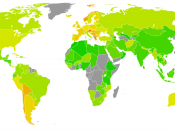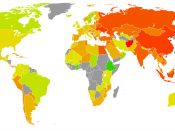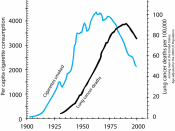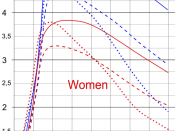Introduction
This report is designed to answer the question "does smoking have an effect of air exhaled (FEV1) for children aged 8-16 years?" It is of interest as we know that smoking can cause many problems for people such as lung cancer. If smoking is affecting their breathing capacity it is important to know how.
Methods
The subjects in the study are children aged 8-16. The determinants are whether children smoke or not, the outcome is the FEV1 level of children. Researchers surveyed 507 Australian children aged 8-16 and recorded whether they smoked or not. In this group 59 reported that they were smokers. Another 59 children who said they were non smokers were selected randomly to create a group of 118 for the study.
Smokes 0 = non-smoker
1 = smoker
Age Between 8 and 16
FEV1 Study shows that FEV1 was between 1.5 and 4.5 litres.
Say something about random and representative, and something to do with normal distribution.
Results
The computer output shows a small increase in FEV1 levels in children who are smokers. The comparative box plot shows a similar range in the data but the spread of data shows slight increases in FEV1 levels in smokers. The median is also higher (3.104 compared to 2.608). The 95% confidence intervals show that the mean of FEV1 levels is also higher in smokers (3.07 compared to 2.67). The scatter plot shows the positive relationship with smoking and FEV1 levels.
Conclusion
In conclusion there is a relationship between FEV1 levels and smoking. Smokers can exhale more in the first second of breath than non-smokers, which is a surprising result considering the known side effects of smoking





